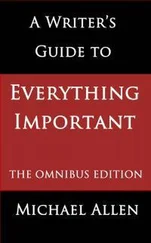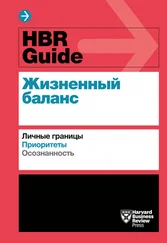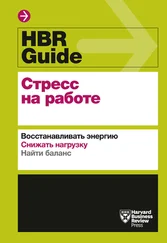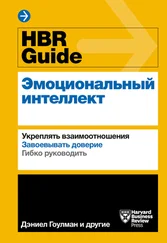Mount Sinai Expert Guides
Здесь есть возможность читать онлайн «Mount Sinai Expert Guides» — ознакомительный отрывок электронной книги совершенно бесплатно, а после прочтения отрывка купить полную версию. В некоторых случаях можно слушать аудио, скачать через торрент в формате fb2 и присутствует краткое содержание. Жанр: unrecognised, на английском языке. Описание произведения, (предисловие) а так же отзывы посетителей доступны на портале библиотеки ЛибКат.
- Название:Mount Sinai Expert Guides
- Автор:
- Жанр:
- Год:неизвестен
- ISBN:нет данных
- Рейтинг книги:4 / 5. Голосов: 1
-
Избранное:Добавить в избранное
- Отзывы:
-
Ваша оценка:
- 80
- 1
- 2
- 3
- 4
- 5
Mount Sinai Expert Guides: краткое содержание, описание и аннотация
Предлагаем к чтению аннотацию, описание, краткое содержание или предисловие (зависит от того, что написал сам автор книги «Mount Sinai Expert Guides»). Если вы не нашли необходимую информацию о книге — напишите в комментариях, мы постараемся отыскать её.
Mount Sinai Expert Guides — читать онлайн ознакомительный отрывок
Ниже представлен текст книги, разбитый по страницам. Система сохранения места последней прочитанной страницы, позволяет с удобством читать онлайн бесплатно книгу «Mount Sinai Expert Guides», без необходимости каждый раз заново искать на чём Вы остановились. Поставьте закладку, и сможете в любой момент перейти на страницу, на которой закончили чтение.
Интервал:
Закладка:
Use of a validated pain scale is recommended for identifying treatment needs. Both verbal and non‐verbal scales should be used based on the patient's condition.
A numeric ranking scale is a subjective method of ranking pain. A typical method is the visual analog scale which uses a line 10 cm long with every centimeter marked as a number. The patient is asked to rank their pain along this scale, with 10 being the worst possible pain. For patients who are cognitively unable to make this association, the faces pain scale is an option with a series of six faces with differing expressions of distress shown. The patient is asked to point to the face that most approximates their current state.
An objective pain scale can also be used as many patients are unable to actively participate in their own pain assessment due to intubation and sedation or cognitive problems. The two best validated methods are the behavioral pain scale (BPS) and the critical care pain observation tool (CPOT). Additionally, the CPOT has recently been shown to be valid in patients with traumatic brain injury.
The BPS is comprised of three domains: facial expression, upper limb movement, and compliance with ventilation, each scored from 1 through 4. A total score of 5 or less is considered acceptable pain control.
The CPOT is comprised of four domains: facial expression, body movements, compliance with the ventilator or vocalization, and muscle tension, each scored from 0 to 2 with a total possible score of 8.
Medications for sedation and analgesia
Recommended doses are from the Society of Critical Care Medicine (SCCM) 2013 Pain, Agitation, and Delirium Guidelines.
Opioids
Considered the first line analgesic by the SCCM guidelines for ICU patients.
As a class, they have some sedative properties when given in high enough doses, but have no amnestic effects.
Side effects are reasonably universal and include respiratory depression, hypotension, itching, nausea and vomiting, miosis, and decreased gastric motility.
Choice of opioid and dosage must be tailored to the individual patient. For example, a 24‐year‐old patient in a trauma ICU who was actively taking suboxone at the time of admission may require an order of magnitude more opioid for the first 24 hours than a 72‐year‐old patient with renal failure.
Fentanyl
Pharmacology:Synthetic opioid with no active metabolites.Broken down through the CYP3A4 pathway, with a potential for prolonged effect with certain chemotherapy agents.Highly lipid soluble.Onset of action 1–2 minutes, duration of effect ~40 minutes.Elimination half‐life 2–4 hours.CSHT is 200 minutes after a 6 hour infusion, and 300 minutes or greater after a 12 hour infusion (this can increase unpredictably in multiorgan failure).
Drug‐specific side effects:Chest wall rigidity: a very uncommon side effect of synthetic opioids that can be complicated by glottic closure and trismus. Appears somewhat related to dosage, rapidity of administration, extremes of age, presence of critical illness, and use of antidepressant medications. Can render a patient unable to ventilate. Requires immediate reversal with naloxone and preparations for emergent intubation with a neuromuscular blocker. If no further complications are noted (e.g. negative pulmonary pressure edema due to closed glottis), extubation can be attempted within minutes of cessation of rigidity and neuromuscular blockade. This is not an allergic reaction and does not preclude the patient from receiving this analgesic agent in the future.
Recommended doses:Bolus: 0.35–0.5 μg/kg IV every 0.5–1 hour.Infusion: 0.7–10 μg/kg/h.PCA: bolus 15–75 μg, lockout interval 3–10 minutes.
Hydromorphone
Pharmacology:Semisynthetic opioid.Hepatic metabolism, renal elimination.No active metabolites.Onset of action 5–15 minutes, duration of effect 3–4 hours.Elimination half‐life 2–3 hours.
Drug‐specific side effects:Some histamine release with administration.
Recommended doses:Bolus: 0.2–0.6 mg IV every 1–2 hours.Infusion: 0.5–3 mg/h.PCA: bolus 0.1–0.5 mg, lockout interval 5–15 minutes.
Morphine
Pharmacology:Poorly lipid soluble.Hepatic metabolism with active metabolite morphine‐6‐glucuronide.Renally eliminated.Onset of action 5–10 minutes, duration of effect 4–5 hours.Elimination half‐life 3–4 hours.
Drug‐specific side effects:Accumulation can occur in renal failure.Can cause clinically significant histamine release.
Recommended doses:Bolus: 2–4 mg IV every 1–2 hours.Infusion: 2–30 mg/h.PCA: bolus 0.5–3 mg, lockout interval 10–20 minutes.
Methadone
Pharmacology:Synthetic opioid with antagonism of NMDA receptors along with usual agonism of opioid receptors.Hepatic metabolism and renal elimination.No active metabolites.Onset of action 10–20 minutes, duration of effect 6–8 hours.Elimination half‐life 15–60 hours.
Drug‐specific side effects:QTc prolongation: ECG monitoring is recommended while using this drug.
Recommended doses:Bolus: 10–40 mg every 6–12 hours.Infusion: not recommended.
Benzodiazepines
Associated with increased rates of delirium and PTSD.
Anxiolytic, amnestic, and anticonvulsant.
GABA agonist.
No analgesic properties.
Synergistic respiratory depression with opioids.
Can cause hypotension.
Hepatic metabolism and renal elimination.
Midazolam
Pharmacology:High lipid solubility.Active metabolites.Only benzodiazepine formulation without propylene glycol as solvent.Metabolized by several cytochrome P450 enzymes.Onset of action 2–5 minutes, duration of effect 1–2 hours.Elimination half‐life 3–11 hours, significant CSHT.Cessation of effect is due to redistribution.
Drug‐specific side effects:Renal elimination of active metabolites.
Recommended doses:Bolus: 0.01–0.05 mg/kg.Infusion: 0.02–0.1 mg/kg/h.
Lorazepam
Pharmacology:No active metabolites.Onset of action 15–20 minutes, duration of effect 1–2 hours.Elimination half‐life 3–11 hours.
Drug‐specific side effects:Typical solutions contain propylene glycol that can cause metabolic acidosis and acute kidney injury when run as an infusion. A serum osmolar gap greater than 10–12 mOsm/L suggests propylene glycol toxicity.
Recommended doses:Bolus: 0.02–0.04 mg/kg (maximum dose 2 mg) every 2–6 hours as required.Infusion (generally not recommended): 0.01–0.1 mg/kg/h (maximum dose <10 mg/h).
Diazepam
Pharmacology:Active metabolites.Onset of action 2–5 minutes IV, peak effect 1‐2 hours, duration of effect variable but typically 4–6 hours.Can be given per rectum for seizure treatment if no intravenous access.Elimination half‐life 20+ hours due to active metabolites.
Drug‐specific side effects:Respiratory depression.Phlebitis.Uses propylene glycol as solvent.Accumulation of metabolites in renal failure.
Recommended doses:Bolus: 5–10 mg IV.PRN dosing: 0.03–0.1 mg/kg every 0.5–6 hours.Rectal dose for seizures: 0.2 mg/kg seizures, every 4–12 hours as required, status epilepticus 0.5 mg/kg bolus and 0.25 mg/kg every 10 minutes as required.
Other sedatives
Propofol
Pharmacology:Predominantly agonist at GABA receptor.Hypnotic, antiemetic, and anticonvulsant.No analgesic properties.98% protein bound.No active metabolites.Onset of action 1–2 minutes, duration of effect 5–10 minutes.Propofol is delivered in a fat emulsion that provides 1.1 kcal/mL. This should be considered when adjusting enteral and parenteral nutritional requirements.
Читать дальшеИнтервал:
Закладка:
Похожие книги на «Mount Sinai Expert Guides»
Представляем Вашему вниманию похожие книги на «Mount Sinai Expert Guides» списком для выбора. Мы отобрали схожую по названию и смыслу литературу в надежде предоставить читателям больше вариантов отыскать новые, интересные, ещё непрочитанные произведения.
Обсуждение, отзывы о книге «Mount Sinai Expert Guides» и просто собственные мнения читателей. Оставьте ваши комментарии, напишите, что Вы думаете о произведении, его смысле или главных героях. Укажите что конкретно понравилось, а что нет, и почему Вы так считаете.











